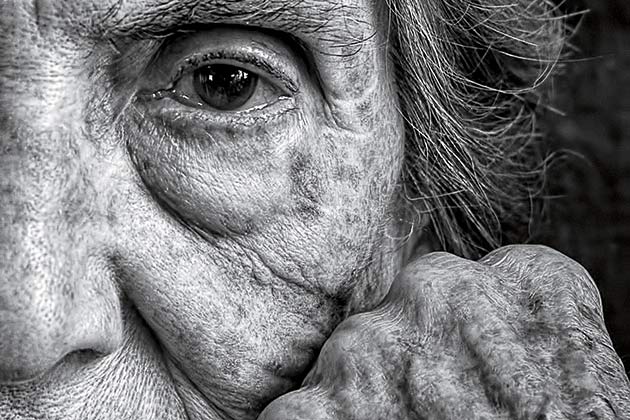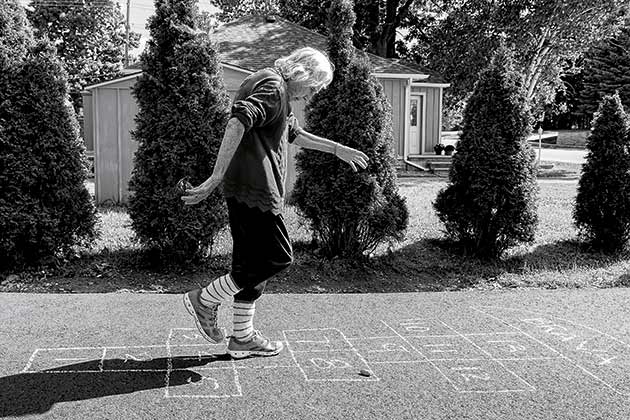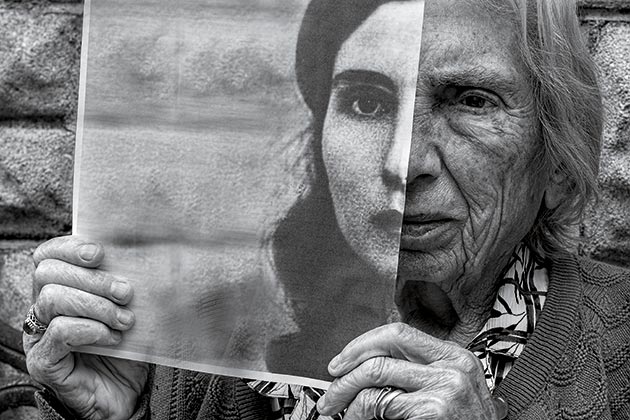Published On June 13, 2017
IN THE EARLY 1990s, a group of mutant laboratory roundworms, Caenorhabditis elegans, lived to the ripe old age of six weeks. For roundworms, which typically survive only a few weeks, this was an eternity. The worms, developed in Cynthia Kenyon’s lab at the University of California, San Francisco, possessed mutations in a gene that usually helps regulate a hibernation-like state. The cell-preserving mechanism that they helped kick in protected roundworm larvae when food was scarce in the wild. For Kenyon’s worms, however, those protective mechanisms were triggered during the worms’ regular—and suddenly very long—lives. They were dubbed Methuselahs and are regarded as a landmark in modern science, forerunners of a time when medicine might know how to manipulate the process of aging itself.
A roundworm is a very long way from a human. But that precedent helped inspire scientists to spend the next quarter-century learning more about the great biological symphony of aging—or, to be precise, of senescence, the deterioration within an organism that occurs as the years pile up. They hope to postpone a reckoning with the diseases that aging most often brings: cancer, diabetes, dementia, heart disease, all manifestations of a common underlying cellular senescence.
This quest to lengthen lives has had disappointments—many of them. High-profile clinical trials of a drug derived from resveratrol, a compound found in red wine and linked to extended life in mice, were halted in 2010. One year later, a headline-making Science study on the genetics of long-lived people was retracted for methodological sloppiness. Skin creams have been developed to support the function of telomeres—the enzyme caps that protect the ends of chromosomes and whose deterioration has long been linked to aging—but so far they are clinically unproven.
Yet gerontologists, who study aging, insist that their understanding has grown by leaps and very practical bounds. “Many of us feel we’re not that far away from a therapeutic intervention,” says S. Jay Olshansky, a biodemographer at the University of Illinois at Chicago who specializes in human longevity and policy issues related to aging. “Those are words we wouldn’t have used a few years ago.” The field has, as it were, come of age.

ROUNDWORMS AND HOMO SAPIENS have been evolving independently of each other for millions of years. Still, the biological pathway studied in Kenyon’s Methuselah worms has close analogues in other animals. Biochemical mechanisms of aging in other species, in fact, turn out to be deeply relevant to humans. “The process of aging is controlled by very basic phenomena,” says Felipe Sierra, director of the Division of Aging Biology at the National Institute on Aging. “Each species, when it develops longevity, goes to that same toolbox.”
A landmark review published in 2013, “The Hallmarks of Aging,” was written by a group of molecular biologists, including Manuel Serrano and his team from the Spanish National Cancer Research Center, and provides a comprehensive summary of what researchers know so far, based on thousands of studies. The underlying theme of these studies is that aging results from an accumulation of cellular damage that outpaces the ability of cells to fix themselves. That in turn leads to the deterioration of tissues and to malfunctions that manifest themselves in age-related diseases.
The primary hallmarks of aging include genome instability, telomere breakdown, epigenetic deterioration and protein misfolding. Sometimes cells don’t copy themselves perfectly, leading to accumulating changes in genes. Beyond that harm to genes themselves, there can be aberrations in the epigenome, the chemical code that regulates gene activity. And proteins, which do most of the work in cells and are required for the structure, function and regulation of tissues and organs, may fold into the wrong shape or get created in the wrong quantities. Cells have self-repair mechanisms, but those, too, can be damaged or decrease in efficiency with aging.
Other hallmarks have to do with other cellular responses to this instability and damage. Nutrient-sensing mechanisms malfunction and mitochondria, the structures that convert chemical energy into a form of energy that cells can use, start to break down. Cells cease to divide, which can slow down or overwhelm the processes needed to dispose of dead cells as a person ages. The gathering waste causes inflammation and interferes with how the body is supposed to function.

All of these forms of cellular damage, and the responses to it, integrate to produce more breakdowns. Communication between cells falters, and stem cells, which need to replicate to provide tissues with a steady flow of replacement cells, become exhausted and can’t regenerate new tissue. Depending on the course of the deterioration and the tissues most affected, the immune system may weaken, memories can vanish, and malignant tumors or other diseases of aging may develop.
Each element of age-related breakdown is complex in its own right, and the interaction of various processes adds further complications. Already, though, in experiments with model organisms, researchers have managed to manipulate the processes they’ve discovered in ways that extend life. Replenish stem cells, protect telomeres, clean out the senescent cells, and you can delay age-related diseases—if only, so far, in many nonhuman species.
Those altered creatures don’t live forever, but they do push the envelope of what is only very rarely possible, like a person who makes it to 120. They also tend to stay healthier for a longer time period in their old age. When their biological systems finally break down, it happens quickly at life’s end.
THE SUCCESS WITH ANIMALS raises the obvious question of what may be possible for humans. One idea, in very early stages of development, is to tweak genes to revert aging stem cells to younger states. Another nascent approach builds on experiments that swapped blood between young and old mice. The younger blood, containing senescence-decelerating molecules, significantly improved muscle regeneration in older mice, pointing to potential therapies that may slow down aging.
Other treatments are further along, and one therapy, already used by many people, could become the first drug officially approved as an age-targeting treatment by the U.S. Food and Drug Administration. Metformin is well known as a diabetes treatment. After its introduction in the 1990s, researchers noticed that people who took the drug not only controlled their diabetes but also were less likely than others to develop heart disease and cancer. A 2014 study of more than 78,000 people treated with metformin found a 15% lower incidence of total mortality compared with that of nondiabetics.

That doesn’t prove that metformin caused the improvement, but the finding is in line with what is known about the drug’s impact. While its primary effect is to change the way glucose is metabolized in people with diabetes, it also affects other cellular processes that result in inflammation, DNA damage and senescence. To investigate further, the American Federation for Aging Research and the National Institutes of Health, in alliance with the FDA, plan to launch the Targeting Aging with Metformin (TAME) trial, which will be led by Nir Barzilai, a giant in the field of longevity research and director of the Institute for Aging Research at the Albert Einstein College of Medicine, in New York City.
If the trial ultimately demonstrates that metformin slows aging and its diseases, it could pave the way for other drugs that target aging directly. Even if metformin disappoints, the trial will have set an important precedent, demonstrating that the FDA is open to treating aging as if it were a disease. Senolytics, drugs that hasten the elimination of senescent cells, and rapamycin, an immunosuppressant used in organ transplants that regulates processes involved in protein synthesis and cell proliferation, are two other promising treatments. In 2009 rapamycin was shown to extend the lives of mice by roughly 10%, an improvement that has since been demonstrated in several other strains of mice.
Still, not everyone is optimistic that pharmaceutical interventions can do the job alone. Luigi Fontana, co-director of the Longevity Research Program at Washington University in St. Louis, prefers a more systemic approach: low-calorie diets that cause cells to go into a protected mode resembling that of Cynthia Kenyon’s Methuselah worms.
In one study, Fontana and his colleagues are gauging the impact of intermittent fasting on chronic inflammation levels in obese people. Another one of his trials compares intermittent fasting’s effects on people with western or Mediterranean diets. A third, recently concluded, involved protein restriction to inhibit prostate cancer growth.
Of course, many people may find it difficult to follow low-calorie diets. But George Soultoukis, a developmental biologist at the Max Planck Institute for Biology of Ageing in Cologne, Germany, thinks that might not be necessary. He envisions foods inspired by emerging research on the role of specific amino acids and proteins, rather than total calories, in the benefits of caloric restriction. Manufacturers of foods you find at the supermarket could tweak their products’ composition in ways that promote longevity. Fontana, though, is careful to temper expectations, noting that the more research there is into how caloric restriction works, the more complicated the processes are proving to be.

OTHER SCIENTISTS HAVE APPROACHED questions of human aging from a completely different direction, studying people who have achieved exceptionally long lives. One part of that research has pointed to genetic mutations that seem to be concentrated in centenarians, people who live beyond 100 years. Those gene variants are involved in some of the same processes that regulate metabolism and immunity, protecting cells in model animals.
These researchers are also finding that much of the human life span doesn’t just depend on characteristics people are born with, but rather on a host of other factors: lifestyle, relationships, environment, psychology. That might seem like common sense, but the centenarian studies give it scientific heft.
Research on so-called blue zones—a handful of regions that boast unusually high numbers of centenarians—has identified such hot spots as the interior mountains of Sardinia. There, the most salient local trait isn’t genetic, but rather a propensity for youthful exercise. It’s a region of shepherds, and many of the men who live to advanced ages spent their early lives walking long distances over steep terrain.
People in blue zones also tend to have common dietary habits. They eat smaller meals, have their last meal in the late afternoon or early evening, and consume lots of whole grains and vegetables—practices that are in line with modern dietary research. Social connections are crucial, too. In Okinawa’s blue zone, a cultural tradition called moaiscreates groups of five people obligated to be intimate, lifelong friends. That resonates with the idea that centenarians who have stronger social networks before reaching old age might fare better.
Psychology seems especially influential. Many centenarian studies point to the importance of mental resiliency and openness to new experiences. “Old people, especially centenarians, are confronted with key losses in all domains—health, mobility, loved ones—yet they seem happy and able to deal with those limitations,” says Daniela Jopp, a psychologist at the University of Lausanne who studied centenarians living in New York City. “Centenarians have quite a few psychological strengths that can buffer and protect them from difficulties.” Research on centenarians in the U.S. state of Georgia emphasized the importance of traits such as enthusiasm, warmth and self-discipline, with the single greatest predictor of health being their own perception of it. Optimism was literally healthy.

Cause and effect is tricky here. Someone who has managed to survive for a century might simply feel happy as a result. But it also may be that centenarians benefit from genetic traits that help them feel more upbeat—and that disposition, in turn, minimizes cellular damage. Leonard Poon, former director of the University of Georgia’s Institute of Gerontology, notes how people with a genetic variant linked to late-onset dementia and diabetes are more prone to stress than people who don’t have that mutation. It’s possible that their genetic makeup amplifies the effects of stress, which in turn accelerate the cellular breakdowns of aging. “Both psychology and biology would act synergistically,” says Poon. “The study of such interactions is the exciting new frontier.”
While lab-based gerontologists chafe at the notion that lifestyle alone will provide a longevity breakthrough, most also doubt that drugs by themselves will suffice. “I don’t believe that if you’re doing whatever you want, and then take one or two drugs, you’ll then live long and healthy,” says Fontana. “Social relationships, exercise, sleep, avoiding exposure to pollution—you can’t get all that with a pill.”
Finally, beyond the question of what will be required to make human lives longer and healthier is the matter of who will benefit. Massive health disparities already exist between those with different levels of wealth, and in the United States, the poorest 1% of Americans live an average of 12 fewer years than the richest 1%. If longevity breakthroughs carry a high price tag—such as that of everolimus, a cancer drug that could have antiaging effects and can cost more than $7,000 per month—the cost could exacerbate those differences.
“When we finally get the magic cocktail to make us live longer, will it be so crazily expensive that only a few people will have access to it and be able to benefit?” asks Raul Mostoslavsky, a molecular biologist at the Mass General Cancer Center and a faculty member at the Broad Institute.
Public health policy and social engineering aimed at prolonging lives might be as important—and as difficult—as finding the next aging breakthrough. “The question is,” says Fontana, “how can we change the system to give everyone the longest, best lives they can lead?”
Dossier
“The Hallmarks of Aging,” by Carlos López-Otín et al., Cell, June 2013, and “Geroscience: Linking Aging to Chronic Disease,” by Brian K. Kennedy et al., Cell, November 2014. The rate of aging is primarily controlled by genetic pathways and biochemical activities. These two landmark reviews weave together the many threads of aging’s cellular processes.
“Promoting Health and Longevity through Diet: From Model Organisms to Humans,” by Luigi Fontana and Linda Partridge, Cell, March 2015. Low-calorie diets and meal timing can ameliorate aging and age-associated diseases in humans.
Aging: The Longevity Dividend, edited by S. Jay Olshansky, George M. Martin and James L. Kirkland (Cold Spring Harbor Laboratory Press, 2016). The author asks how societies will support more older citizens if science succeeds in lengthening the average life span.
Stay on the frontiers of medicine
Related Stories
- Why Plaque Attacks
A bold theory—that the brain-tangling proteins of Alzheimer’s disease may form to fight infection—could spur new research.
- Is Aging a Disease?
If, as some scientists suspect, illnesses that strike late in life have a common root, similar therapies might help us avoid many of them.
- DNA Unlaced
Like shoelaces’ tips, telomeres do damage control, preserving DNA and slowing aging. What happens if we extend their expiration date?